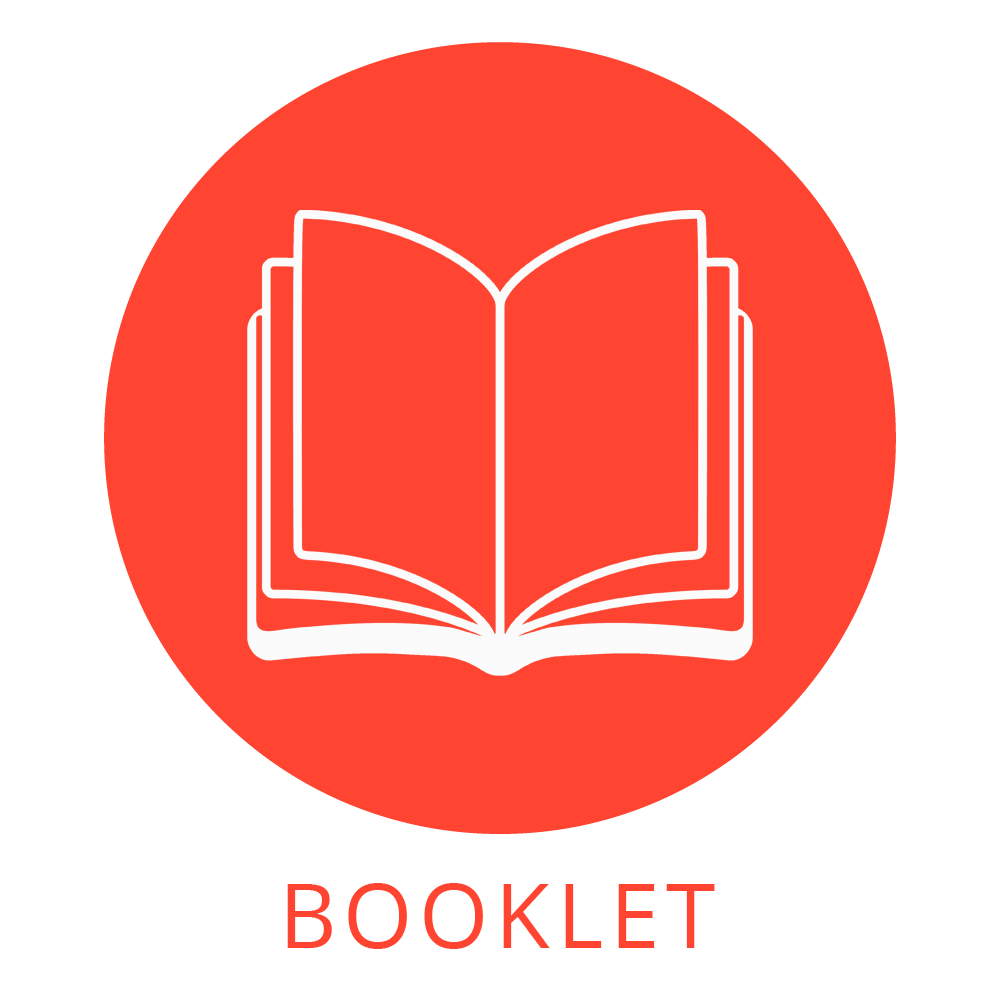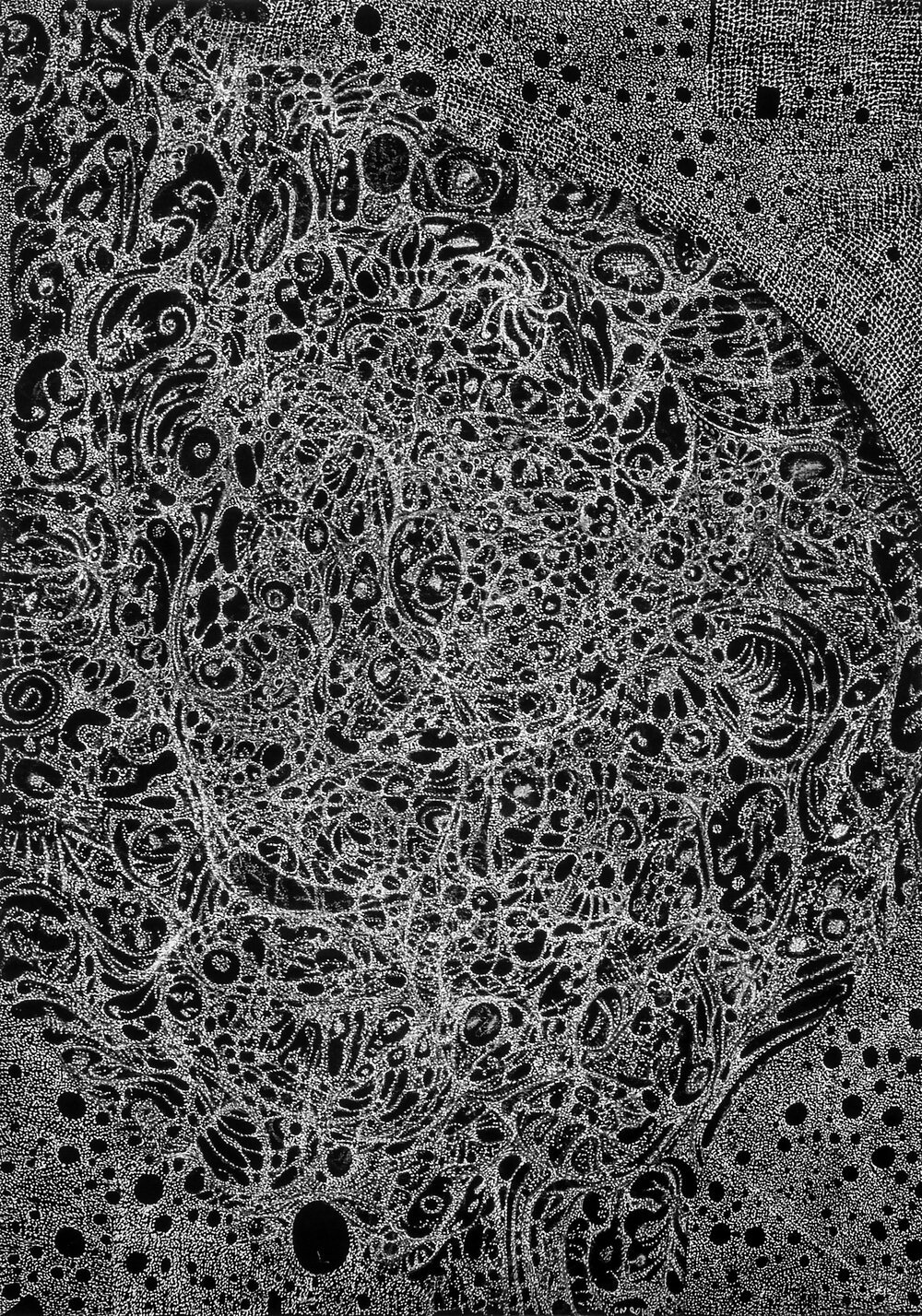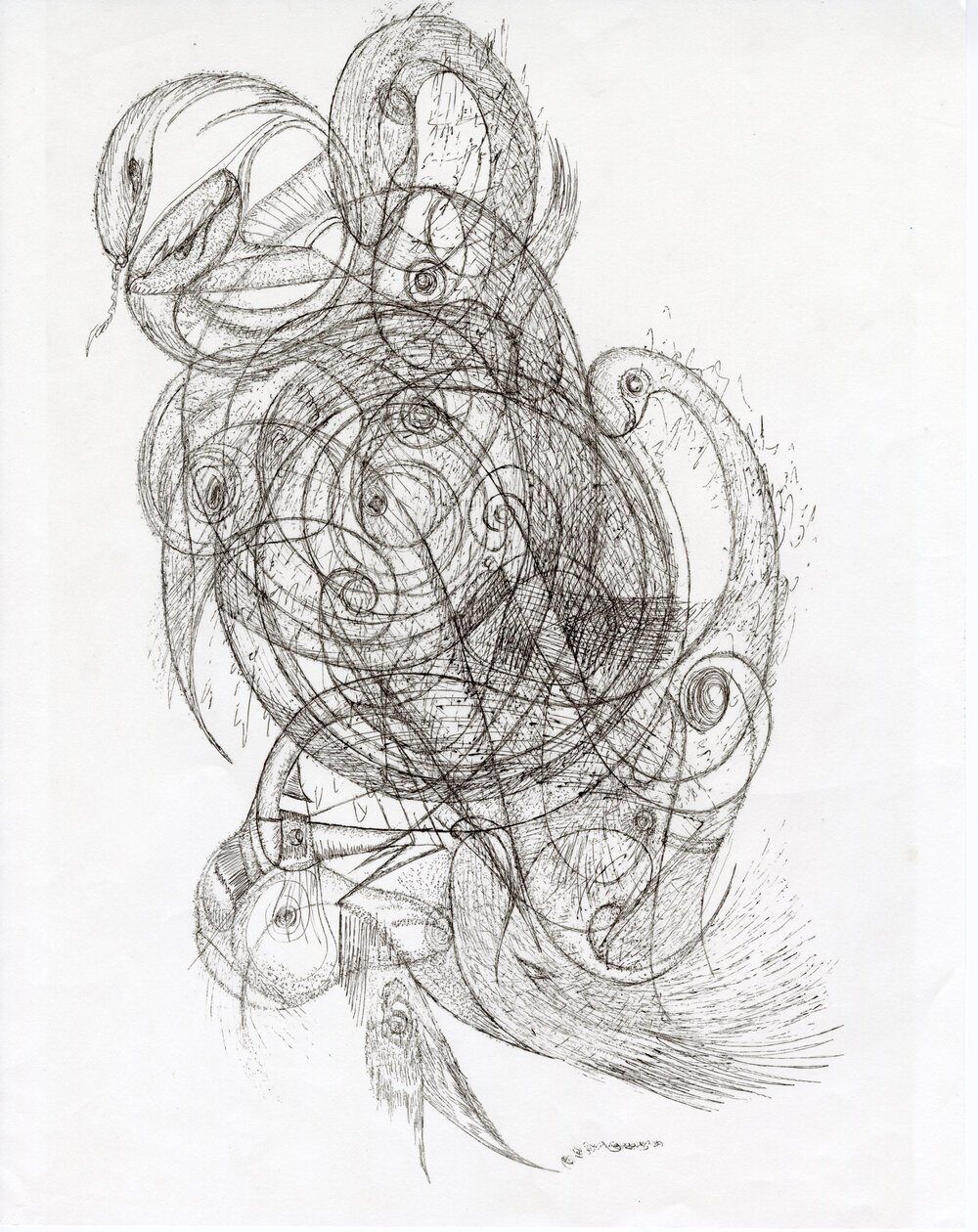o2o | GHASEM AHMADI BAFANDEH | CHRIS NEATE | ZINNIA NISHIKAWA
Kindred Spirits
o2o, Who are you?

Kindred Spirits presents drawings by four artists whose works possess a numinous energy and compelling beauty. The irrepressible urge to draw, accompanied by experiences of a spiritual or psychic nature, forms a harmonious bond between the artists. Each has a deep understanding of the other’s ups and downs encountered in the development of this unusual artistic process. Some of this development has taken years, like o2o, whose name symbolises eternal learning or wisdom. He discovered his clairvoyant and clairaudient abilities, along with the skill to create, at a young age. For others, like Nishikawa, this skill came later through the act of doodling.
Over time these kindred spirits have all found ways of working that are favourable to their act of mark making. For the majority, music is often instrumental to the creative process, as is a quiet space without distraction. Ahmadi uses a candle to alter the light around him, whilst Neate occasionally looks at the flickering and muted television screen showing old British movies that remind him of the past. The mood is an important aspect for these artists. Neate’s pen, for example, will not flow if he is distracted, causing the lines to become heavier. He also continues his search for the perfect chair in which to work, whilst Ahmadi found his treasured seat abandoned in a parking lot.
Drawing is an essential part of the lives of these four artists who begin by establishing a meditative or trancelike concentration that o2o describes as being “out of myself.” Here, real time fades out of focus as they become absorbed in their creativity, and without a preconceived idea of the outcome, their pens glide effortlessly and automatically across the paper. It is as if a veil is briefly lifted or a portal has opened to another level of time and space, a parallel dimension within us or around us. Subconscious thoughts, memories, souls and spirits draw closer and flow through the conscious mind of the artists with a mysterious force that often feels to them like they are being guided in some way by an unknown entity. It is as if they have connected to a higher force or dipped into a deep universal well of consciousness that is beyond the reach of most people. Through the humble pen or pencil, they are able to render the invisible as a mesmerising reality and capture on paper these ethereal images and fleeting thoughts in an art form that is more than mere creative skill and imagination. Their drawings depict a connection, harness and release of an energy in the form of an image that is succinctly described by Neate as “part of an eternal memory of which the act of drawing unlocks so that it can appear in the world.”
Common characteristics are evident among the artworks in this exhibition. They are predominantly monochrome, which Nishikawa describes as “conducive to maintaining a rhythmic flow.” Neate compares the diaphanous gossamers of fine lines surrounding mysterious faces to residual energy from people before us, “like souls sewn in the mesh of time.” Other examples have monolithic shapes or primordial creatures, occasionally embedded with geometric symbols and text. In the case of o2o the words are from languages we recognise, whereas in Nishikawa’s work it is predominantly an unidentifiable script. With Neate and Nishikawa a further layer of otherworldliness is formed from the act of turning the paper or board while working, producing an ambiguity to its orientation. All of these drawings have an ethereal quality that is like a glimpse from the corner of your eye that is just out of reach of normal vision.
The finished drawings are often a surprise to the artists. They feel like they are seeing their work for the first time and find themselves attempting to interpret its meaning. It is at this stage that o2o chooses to make conscious changes, whilst Ahmadi admits that he sometimes wants to do more, but resists the temptation saying “I know that I am not supposed to touch it as the work is already speaking and alive.” He describes his work as holographic, an illusion of a three dimensional space where every line is a tangible presence of experience reflected back. He expresses so beautifully the healing element that these drawings can offer when he says “I can talk, walk, climb, smile, love and kiss all the sadness goodbye with them.” For each of these kindred spirits, drawing has the ability to give them a sense of wellbeing, balance and contentment.
There is a collective power in this exhibition formed by bringing together such like-minded artists. Furthermore they are not alone; their artworks share an uncanny resemblance to thousands produced by other kindred spirits, including Madame Bouttier, Fernand Desmoulin, Laure Pigeon, Alice Pery and Madge Gill. This is an indication that the artists in this show are a small but significant part of a continuum which is growing into a hitherto overlooked genre of art worthy of more attention.
It is difficult to ignore these artists’ numinosity and the marvelous qualities of their work. We may find it difficult to understand aspects of their work and often the artists themselves find this difficult too, but they never fail to evoke fear or fascination in us. They allow us to confront the invisible and to think about our connection to it. They offer a quiet moment of stillness in the midst of our often chaotic lives. They have the ability to awaken in us, with a jolt of clarity that pierces our usually dormant senses, a perception that lies outside of our limited views of reality. These drawings symbolise a pathway to a heightened state of consciousness, a super consciousness where we may see the world differently. The works have a palpable presence, an animistic quality and an energetic light which vibrates, speaks and resonates with anyone who wants to tune in. They have the potential to bring out emotions in us which enable us to connect on a deeper level with ourselves, each other, the past and the future. Ahmadi, Neate, Nishikawa and o2o are inspirational artists and kindred spirits who inspire us to unleash our curious minds.
Vivienne Roberts, Curator and Archivist at College of Psychic Studies, London
NOTE: A simplified version of this text that was used for the BSL interpretation can be found HERE.
Introduction

o2o
(b.1982), London and Spain
From the age of six there are two subjects that have played a major role in o2o’s life: art and spiritual experiences. Both have never disappeared, but grown greater in importance. His art processes from childhood have been different styles of automatism that he has developed in his own unique way over the years - combining psychic mediumship with his art production. o2o works mainly through trance-based spiritual contact alongside guides. During his development he has constantly pushed experimentation in his works, to disconnect them from himself and his ego. This has then allowed the higher energies to flow and show themselves. His spiritual drawings and automatic writings start with him being in a trance-like state, to allow words and faces to appear, from energies that want to be heard and seen. The drawings themselves are deeply developed from automatic writing with an almost 3D depth to it, to include very detailed delicate imagery. The works are almost always monochrome. Over a year he often re-visits the automatic drawings and, after reflection, adds to the works.
Click the icon below to listen to an audio description of this image.
“At the minute I get an urge to do it and I can work on a piece for hours, as I cannot then separate myself from it. Sometimes I can’t sleep as it is bugging me to carry on with it.”

GHASEM AHMADI BAFANDEH
(b.1989), Iran
Ghasem Ahmadi was born in Ahwaz and was raised in Tehran. His father was a military man and had been in the war for eight years. Ahmadi’s childhood was a happy one, even though he didn’t have many friends in his city. The war and the fact that his parents were religious had a profound effect on his character and sensitivities, a characteristic evident in his work. During school breaks, he developed a bond with his loneliness - creating stories with drawings or makings things out of garbage or sticks that he found in the garden. Self-taught, Ahmadi dropped out of school and settled in northern Iran, working in a fast food restaurant for six years. It was there he started reading books suggested by his friend, including texts on psychology. Such situations become a good excuse for painting and accidentally, five years ago, he began to express his inner self through images. War, religion and his recent readings have penetrated into his being, and are immediately visible in his works. Ahmadi finds that meditation helps and staying focused on drawing with his pen everyday.
There is an inchoate restlessness in Ahmadi’s work that activates his organic drawings in new and unexpected ways. He is represented by Gallery Outsider Inn, Iran and Cavin Morris Gallery, New York.
Click the icon below to listen to an audio description of this image.
“I can talk, walk, climb, smile, love and kiss all the sadness goodbye with them.”

Chris Neate
(b.1954), U.K.
Chris Neate has been developing his style of drawing since his late teens. During his time working as a hospital social worker with older people Neate sporadically drew, and this need to draw has intensified over the years. Whilst creating, Neate has no idea or plans of what will appear on the page, with his work being described as automatic drawing. He believes that the act of drawing balances him and keeps him calm. Working from intuition, his drawings flow freely and Neate can lose himself in his pieces for hours, without suffering fatigue. Each piece can take up to ten days to complete. Neate starts anywhere on the piece, but then always anchors it to an edge before going back and working into it more. Known for his black and white work, colour rarely makes an appearance.
Neate’s work is best viewed with a magnifying glass, so that the intricate detail can be fully appreciated. His more delicate pieces are created when he is in a lighter mood, and the heavier marks are made when he feels distracted. He often works on board as he says the harder surface allows the ink to flow better. Upon finishing pieces, Neate spends time studying them to try and work out the meaning of what he has produced.
Click the icon below to listen to an audio description of this image.
“The divine dreamings of Plato were but the glimpses of that immortal recognition that comes to the soul when all kindred spirits shall recognize each other, and know that through countless myriads of years they have traversed the heights and depths of eternity and still are not lost to one another.”

ZINNIA NISHIKAWA
(b.1963), United States
Many years ago, Zinnia Nishikawa discovered her drawing abilities by chance during a random doodling session. She found that her hand and pencil guided her to what she deemed to be, a place of mystery and imagination. Since then, she feels drawing has been with her like a shadow: always there. She feels that the mysterious force behind her drawing is her subconscious mind. Nishikawa finds the developmental process of each drawing intriguing, like playing a puzzle game. A line here, a mark there - seemingly senseless and unrelated on their own, but as the whole progresses, pieces begin to unfold and they all come together to form a fascinating image. Although she occasionally uses colour in her drawings, she prefers to work with a single black pencil as she feels this allows the drawing process to flow smoothly.
You would likely recognise fish, birds, reptiles, and on occasion, mysterious symbols and languages in Nishikawa’s work. Like many aspects of her art, its orientation can be perceived differently because she constantly turns the paper throughout the drawing process, with the final orientation remaining ambiguous. Her work is now in the College of Psychic Studies in London and the Collection of Mediumistic Art in Germany.
Click the icon below to listen to an audio description of this image.



























